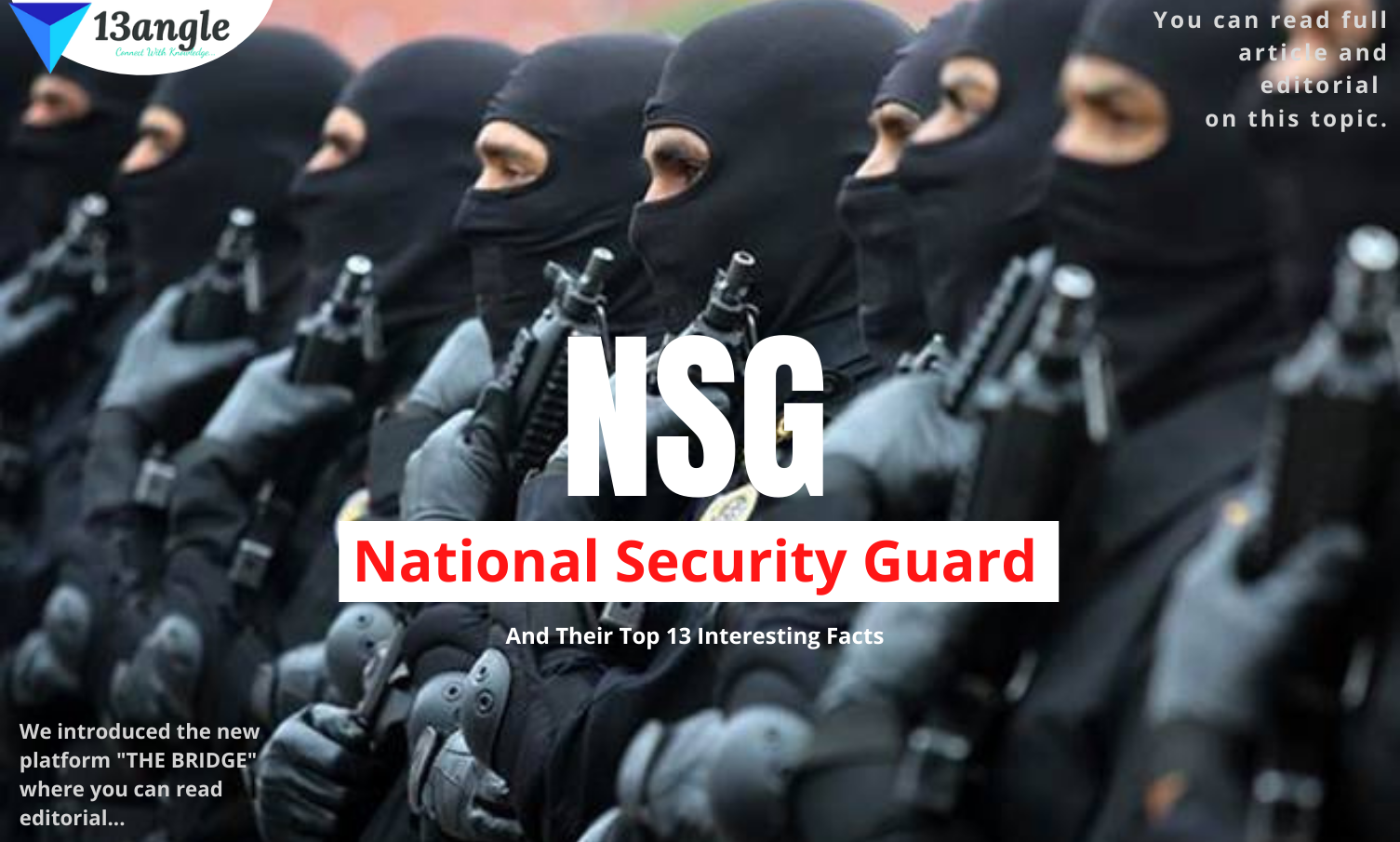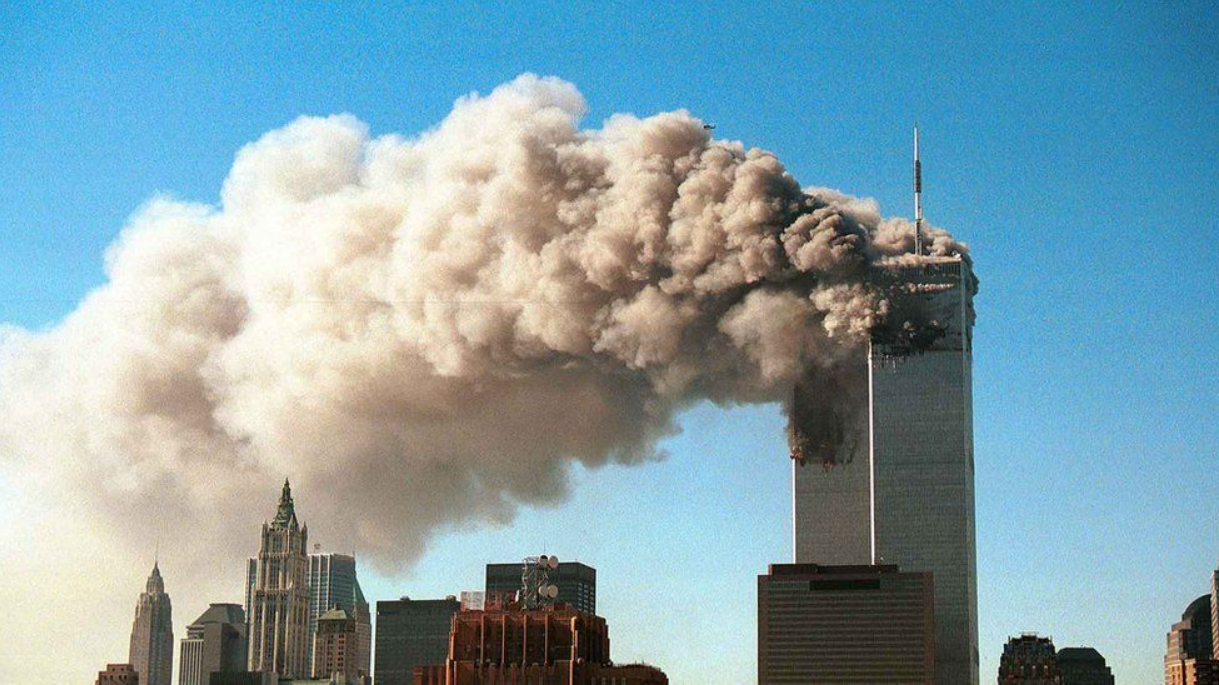
Introduction
The September 11 attacks, generally known as 9/11, were a series of four coordinated terrorist strikes on the United States by the militant Islamist terrorist group al-Qaeda on the morning of September 11, 2001. On the morning, 19 al-Qaeda terrorists seized four commercial planes flying from the northeastern United States to California. Three groups of five hijackers and one group of four hijackers were formed. Each gang had a hijacker who had completed flying instruction and assumed command of the plane. Their stated objective was for each jet to crash into a significant American structure, resulting in numerous fatalities and partial or full destruction of the targets. Two of the planes impacted the World Trade Center Twin Towers, while a third hit the Pentagon’s west side. Following a passenger mutiny, a fourth jet was supposed to crash into a target in Washington, D.C., but instead crashed into a field outside Shanksville, Pennsylvania. American Airlines Flight 11 was the first jet to reach its target. At 8:46 a.m., it was flown into the World Trade Center’s North Tower in Lower Manhattan.
United Airlines Flight 175 impacted the World Trade Center’s South Tower seventeen minutes later, at 9:03 a.m. Within an hour and 42 minutes, both 110-story towers collapsed, causing the fall of other World Trade Center structures, notably 7 World Trade Center, as well as major damage to nearby buildings. A third jet, American Airlines Flight 77, was hijacked over Ohio after taking off from Dulles International Airport. It collided with the west side of the Pentagon (the American military’s headquarters) in Arlington County,
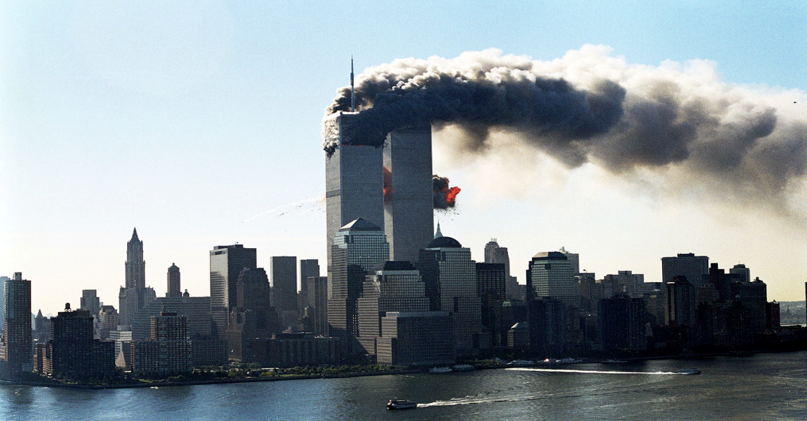
Virginia, at 9:37 a.m., causing a partial collapse of the building’s side. United Airlines Flight 93, the fourth and last flight, was directed to Washington, D.C. The airliner’s passengers attempted to wrest control of the jet from the hijackers, but the flight was diverted from its planned destination and crashed into a field outside Shanksville, Pennsylvania, at 10:03 a.m. Flight 93’s intended aim was either the US Capitol or the White House, according to investigators. Al-Qaeda was instantly singled out as a suspect in the aftermath of the assaults.
Under the George Bush administration, the United States launched the War on Terror and invaded Afghanistan to topple the Taliban, who had refused to comply with US requests to evict al-Qaeda from Afghanistan and extradite al-Qaeda leader Osama bin Laden. Bin Laden retreated to the White Mountains, where he was pursued by US-led forces but was able to flee. Despite originally denying any connection, bin Laden eventually claimed credit for the bombings in 2004. Al-Qaeda and bin Laden claimed US backing for Israel, US soldiers in Saudi Arabia, and sanctions on Iraq as reasons for their actions. Bin Laden was apprehended at a bunker in Abbottabad, Pakistan, after eluding arrest for over a decade, and was killed by the US military on May 2, 2011.
How Attacks Happened
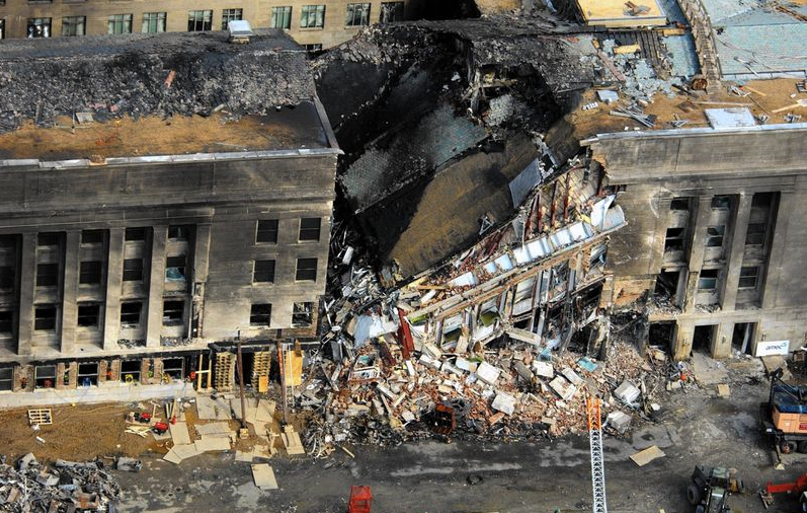
- After takeoffs from Logan International Airport in Boston, Massachusetts; Newark Liberty International Airport in Newark, New Jersey; and Washington Dulles International Airport in Loudoun and Fairfax counties in Virginia on September 11, 2001, 19 hijackers took control of four commercial airliners (two Boeing 757s and two Boeing 767s) en route to California (three to LAX in Los Angeles and one to SFO in San Francisco). Because they would be full of fuel, large jets with extended journeys were targeted for hijacking.
=> The four flights were as follows:-
American Airlines Flight 11 departed Logan Airport at 7:59 a.m, en route to Los Angeles, with a crew of 11 and 76 passengers, except the five hijackers. At 8:46 a.m., the hijackers flew the jet into the northern façade of the World Trade Center’s North Tower in New York City.
United Airlines Flight 175 departed Logan Airport at 8:14 a.m with a crew of nine and 51 passengers, not counting five hijackers, en route to Los Angeles. At 9:03 a.m., the hijackers flew the jet into the southern façade of the World Trade Center’s South Tower in New York City.
American Airlines Flight 77, a Boeing 757 airplane, took off from Washington Dulles International Airport at 8:20 a.m. on its way to Los Angeles, with a crew of six and 53 passengers, except the five hijackers. At 9:37 a.m., the hijackers flew the jet into the Pentagon’s western façade in Arlington County, Virginia.
United Airlines Flight 93, a Boeing 757 aircraft, took off from Newark International Airport at 8:42 a.m. on its way to San Francisco, carrying a crew of seven and 33 passengers, except four hijackers. At 10:03 a.m., the plane crashed into a field in Stonycreek Township near Shanksville, Pennsylvania, while passengers fought to overpower the hijackers.
About The Four Crashes
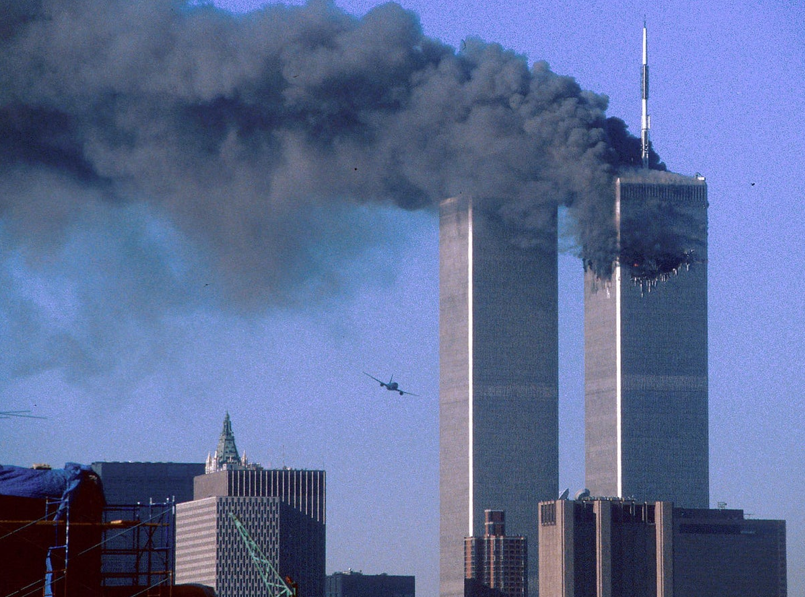
At 8:46 am, five hijackers rammed American Airlines Flight 11 into the World Trade Center’s North Tower’s northern façade (1 WTC). Another five hijackers slammed United Airlines Flight 175 into the southern façade of the South Tower at 9:03 a.m. (2 WTC). At 9:37 a.m., five hijackers flew American Airlines Flight 77 into the Pentagon. After passengers resisted the four hijackers, United Airlines Flight 93 crashed near Shanksville, Pennsylvania, southeast of Pittsburgh, at 10:03 a.m. The Pentagon or the White House are thought to have been the intended targets of Flight 93. After discovering through phone conversations that Flight 11, 77, and 175 had crashed into buildings that morning, the crew and passengers of Flight 93 attempted to wrest control of the jet from the hijackers, according to the cockpit voice recorder. When it became clear that the passengers would regain control, the hijackers purposefully rolled the plane and crashed it.
Several hijackers were onboard each plane; they used mace, tear gas, or pepper spray to subdue attendants; and several persons aboard had been stabbed, according to passengers and crew members who contacted from the plane using the cabin air phone service and cell phones. According to reports, hijackers stabbed and murdered one or more pilots, flight attendants, and passengers. The hijackers had just acquired multi-function hand tools and numerous Leatherman-type utility knives with locking blades (which were not prohibited to passengers at the time), according to the 9/11 Commission’s final report, but these items were not located among the hijackers’ belongings. The hijackers had explosives, according to a flight attendant on Flight 11, a passenger on Flight 175, and passengers on Flight 93, however, one of the passengers believes the bombs were phony. At the crash locations, the FBI found no indications of explosives, and the 9/11 Commission decided that the bombs were most likely fakes.
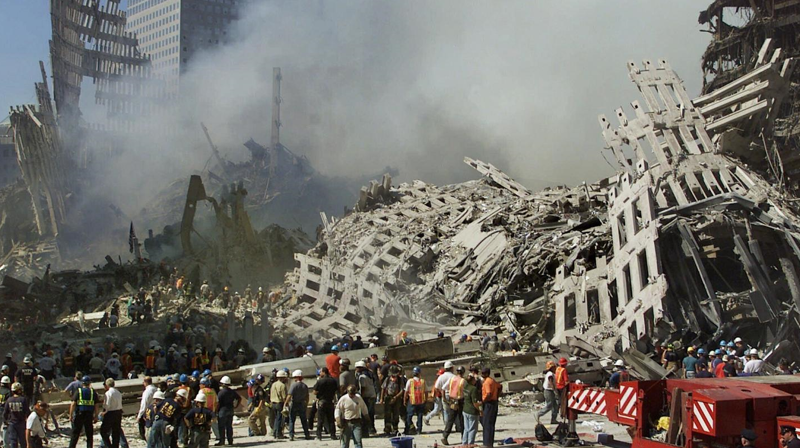
Three of the World Trade Centre’s buildings collapsed owing to structural failure caused by fire. At 9:59 a.m., the South Tower fell after a 56-minute conflagration triggered by the crash of United Airlines Flight 175 and the explosion of its gasoline. After 102 minutes of burning, the North Tower fell at 10:28 a.m. When the North Tower collapsed, debris landed on the adjoining 7 World Trade Center skyscrapers (7 WTC), causing damage and fires. The fires lasted for approximately seven hours, weakening the structure of the skyscraper, and 7 WTC fell at 5:21 p.m. The west side of the Pentagon was severely damaged.
The Federal Aviation Administration (FAA) grounded all civilian aircraft in the continental United States at 9:42 am, and commercial aircraft already in the air were instructed to land immediately. All foreign civilian aeroplanes were turned back or routed to airports in Canada or Mexico, and landing on US soil was prohibited for three days. News organisations and air traffic controllers were thrown into disarray as a result of the strikes. One of the most widely circulated unsubstantiated and frequently contradictory news claims of the day claimed that a vehicle bomb had been detonated near the US State Department’s headquarters in Washington, D.C. [123] Another plane (Delta Air Lines Flight 1989) was suspected of being hijacked, but it landed safely in Cleveland, Ohio after responding to controllers.
Flight 93’s planned objective, according to Khalid Sheikh Mohammed and Ramzi bin al-Shibh, was the United States Capitol, not the White House, according to an April 2002 interview. During the planning stages of the attacks, Mohamed Atta (the hijacker and pilot of Flight 11) considered the White House to be too difficult a target and sought advice from Hani Hanjour (who hijacked and piloted Flight 77).
Al-Qaeda had intended to attack nuclear facilities rather than the World Trade Centre and the Pentagon, Mohammed added, but decided against it because things may “get out of hand.” According to Mohammed, the pilots were given final authority over target selection. If a pilot failed to reach his designated objective, the plane was to crash.
Loop Holes By Security Personnel’s

- Walid bin Attash (“Khallad”), an al-Qaeda affiliate, called Mihdhar in late 1999 and told him to meet him in Kuala Lumpur, Malaysia, where Hazmi and Abu Bara al Yemeni would also be there. The National Security Agency (NSA) intercepted a phone conversation that mentioned the meeting, Mihdhar, and the name “Nawaf” (Hazmi). Despite the fact that the CIA was concerned that “something illicit could be afoot,” it took no more action.
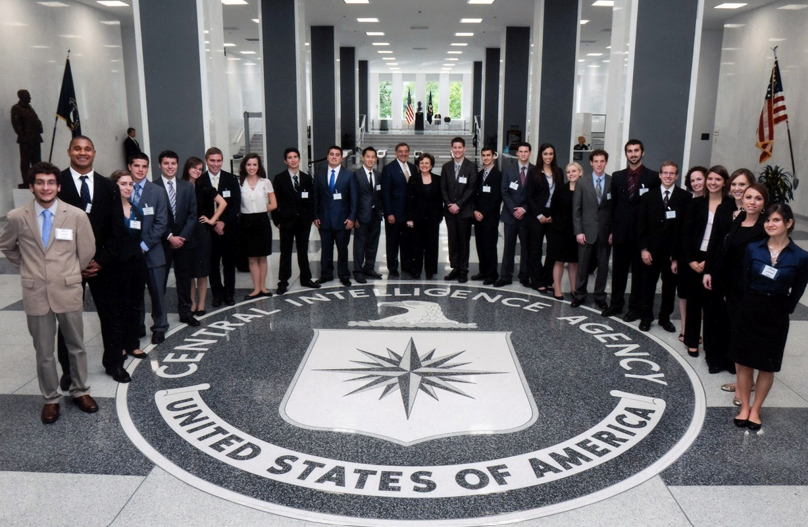
Saudi intelligence had previously told the CIA about Mihdhar and Hazmi’s position as al-Qaeda members, and a CIA team broke into Mihdhar’s Dubai hotel room and discovered that Mihdhar had a US visa. While Alec Station informed intelligence organizations throughout the world of this data, it did not inform the FBI. The Malaysian Special Branch witnessed the two al-Qaeda members meeting on January 5, 2000, and alerted the CIA that Mihdhar, Hazmi, and Khallad were going to Bangkok; however, the CIA never contacted other agencies or asked the State Department to place Mihdhar on its blacklist. “This is not a problem for the FBI,” an FBI liaison at Alec Station was informed when he sought permission to alert the FBI about the meeting.
By late June, CIA Director George Tenet and top counter-terrorism officer Richard Clarke were “convinced that a significant sequence of strikes was about to happen,” however the CIA felt the attacks would most likely take place in Saudi Arabia or Israel. Clarke placed domestic agencies on notice in early July “Something truly remarkable is about to happen here,” he warned them shortly.” He requested that the FBI and the State Department issue alerts to embassies and police departments, as well as that the Defence Department activates “Threat Condition Delta.” Later, Clarke wrote: “There was evidence in the CIA that two known al Qaeda terrorists had entered the country. There was intelligence in the FBI that unusual things were going on at aviation schools in the United States… They possessed detailed information on individual terrorists from which it was possible to predict what was going to occur. Neither I nor the White House received any of that information.” Tom Wilshire, a CIA operative attached to the FBI’s international terrorism section, requested authorization from his superiors at the CIA’s Counterterrorism Center (CTC) on July 13 to alert the FBI that Hazmi was in the country and that Mihdhar had a U.S. visa. The CIA did not answer.
Margarette Gillespie, an FBI analyst working at the CTC, was assigned to analyze evidence related to the Malaysia meeting on the same day in July. The participant’s presence in the United States was not disclosed to her. Gillespie was given surveillance images of Mihdhar and Hazmi from the meeting by the CIA to present to FBI counterterrorism, but she had no idea what they meant. She was told not to disclose intelligence material from the meeting with criminal investigators by the Intelink database. The FBI was denied further information about the images when they were handed them, and they were not provided Mihdhar’s date of birth or passport number. Gillespie urged the INS, the State Department, the Customs Service, and the FBI to put Hazmi and Mihdhar on their watch lists in late August 2001, but the FBI was barred from utilizing criminal agents in their search, hampered their efforts.
In July, a Phoenix-based FBI agent sent a message to FBI headquarters, Alec Station, and FBI officers in New York, warning them about “the likelihood of Osama bin Laden orchestrating a concerted operation to send students to civil aviation institutes and colleges in the United States.” Kenneth Williams, the agent, advised that all flight school managers are interviewed and all Arab students seeking flying instruction be identified. Jordan informed the United States in July that al-Qaeda was planning an assault on the United States; “months later,” Jordan informed the United States that the attack’s codename was “The Big Wedding” and that it would include planes.
The CIA’s “For the President Only” Presidential Daily Brief (“PDB”) on August 6, 2001, was captioned “Bin Laden Determined to Strike in the US.” The FBI evidence “indicates patterns of suspicious activity in this nation associated with hijackings or other sorts of attacks,” according to the document. Zacarias Moussaoui, who had asked “strange inquiries,” was reported to the FBI by a Minnesota flight school in mid-August.
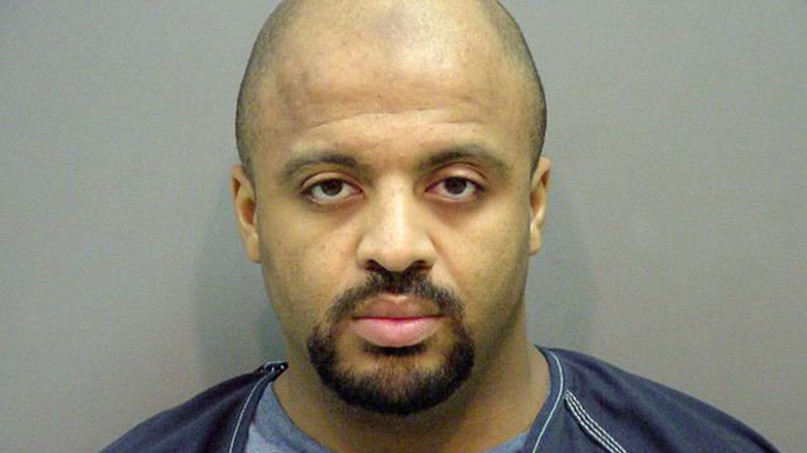
Moussaoui was identified as a fanatic who had been to Pakistan by the FBI, and he was apprehended by the INS for overstaying his French visa. Due to a lack of probable cause, FBI headquarters declined their request to inspect his laptop.
The failures were linked to the 1995 Justice Department policy limiting information cooperation, as well as CIA and NSA reluctance to share “secret sources and procedures” such as tapped phones. In April 2004, then-Attorney General John Ashcroft testified before the 9/11 Commission, saying that the “single largest structural reason for the September 11th disaster was the wall that divided or separated criminal investigators and intelligence officers.” “There were failures to convey information to the right location at the right time,” Clarke added.
Planning
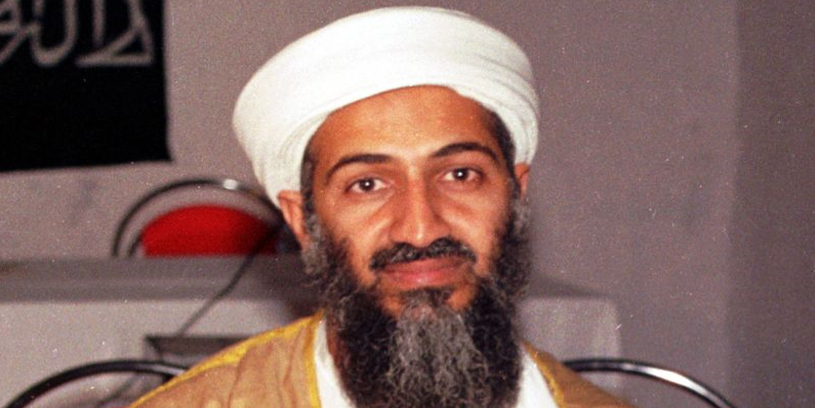
- Khalid Sheikh Mohammed, who initially submitted the plan to Osama bin Laden in 1996, was the mastermind behind the attacks. Bin Laden and al-Qaeda were in the midst of a shift at the time, having recently returned to Afghanistan from Sudan. The bombings of African embassies in 1998, as well as bin Laden’s date is February 1998, signaled a turning point in al-terrorist Qaeda’s campaign, as bin Laden grew increasingly keen on striking the United States.
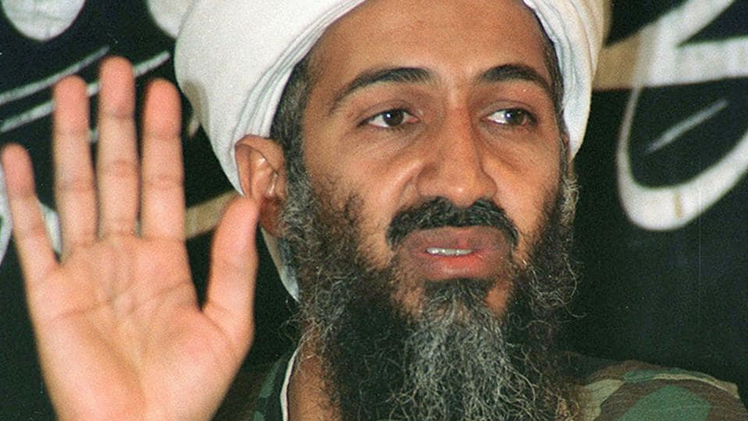
Bin Laden granted Mohammed permission to move through with the scheme in late 1998 or early 1999. In early 1999, Mohammed, bin Laden, and bin Laden’s deputy, Mohammed Atef, attended a series of meetings. Atef provided operational support, such as target identification and assisting the hijackers with travel arrangements. For lack of time, Bin Laden overruled Mohammed, dismissing viable targets such as the US Bank Tower in Los Angeles.
Bin Laden was engaged in the selection of recruits and offered leadership and financial assistance. Nawaf al-Hazmi and Khalid al-Mihdhar, both veteran jihadists who fought in Bosnia, were his first choices. In mid-January 2000, Hazmi and Mihdhar arrived in the United States. Hazmi and Mihdhar received flight training in San Diego, California, in the early 2000s, but both spoke little English, did badly in the classes, and eventually acted as secondary (“muscle”) hijackers. A squad of guys from Hamburg, Germany, came to Afghanistan in late 1999. Mohamed Atta, Marwan al-Shehhi, Ziad Jarrah, and Ramzi bin al-Shibh were among the members of the gang. Bin Laden chose these individuals because they were educated, spoke English, and had lived in the West before. Al-Qaeda authorities learned
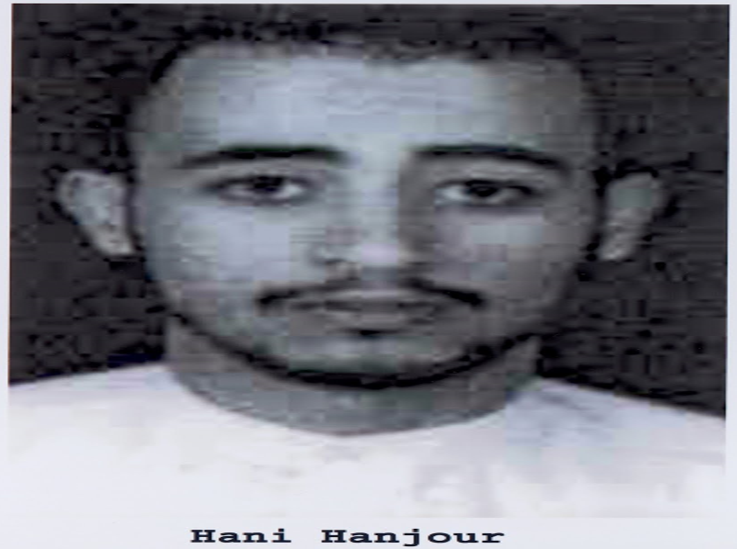
Hani Hanjour already possessed a commercial pilot’s license after frequently screening new recruits for unique talents. Later, Mohammed claimed that he assisted the hijackers in blending in by teaching them how to order meals at restaurants and dress in Western attire.
On December 8, 2000, Hanjour landed in San Diego to join Hazmi. They were soon on their way to Arizona, where Hanjour received refresher instruction. Marwan al-Shehhi came towards the end of May 2000, while Atta and Jarrah arrived on June 3, 2000, and June 27, 2000, respectively. Bin al-Shibh asked for a visa to the United States multiple times but was denied due to worries that he might overstay his visa as a Yemeni, 14 Bin al-Shibh stayed in Hamburg to help Atta and Mohammed coordinate their plans. The three Hamburg cell members all received their flight training at Huffman Aviation in South Florida.
The secondary hijackers began arriving in the United States in the spring of 2001. In July 2001, Atta met with bin al-Shibh in Spain, where they discussed the plot’s specifics, including the eventual target. Bin al-Shibh also relayed bin Laden’s desire for the strikes to take place as soon as feasible. Some of the hijackers used phony passports or got passports from corrupt Saudi officials who were family members.
There have been a few speculations that 9/11 was chosen as the date of the assault by the hijackers because of its resemblance to 9-1-1, the phone number used in the United States to report emergencies.
Government Policies Toward Terrorism
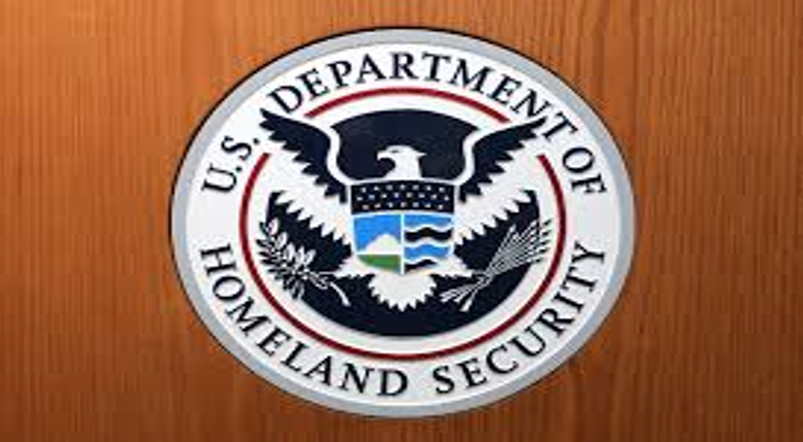
Many countries throughout the globe have introduced legislation to tackle terrorism as a result of the attacks. Two big anti-terrorism packages were adopted in Germany, where some of the 9/11 attackers had stayed and taken advantage of that country’s generous asylum procedures. The first closed legal loopholes that allowed terrorists to live in Germany and gather funds. The second topic was intelligence and law enforcement effectiveness and communication. Canada’s first anti-terrorism statute, the Canadian Anti-Terrorism Act, was approved. The Anti-Terrorism, Crime and Security Act of 2001 and the Prevention of Terrorism Act of 2005 were passed in the United Kingdom. The Terrorism Suppression Act of 2002 was passed in New Zealand.
The Homeland Security Act of 2002 established the Department of Homeland Security in the United States to coordinate domestic anti-terrorism activities. The USA Patriot Act provided the federal government with new authorities, including the ability to hold foreign terror suspects without charge for up to a week, monitor terror suspects’ phone calls, e-mail, and Internet use, and prosecute suspected terrorists without time limits. To prevent terrorists from obtaining control of planes, the FAA ordered that cockpits be strengthened and deployed sky marshals to flights. Furthermore, the Aviation and Transportation Security Act made the federal government responsible for airport security rather than the airports. The Transportation Security Administration was established by legislation to examine passengers and luggage, resulting in considerable delays and concerns about passenger privacy. Representative Jim Sensenbrenner (R- Wisconsin), who introduced the Patriot Act in 2001, said that the NSA overstepped its bounds after articles about the collection of American call records by the NSA and the PRISM program were published in June 2013 (see Global surveillance disclosures (2013–present). The morality, efficacy, and expense of the fight on terror have all been questioned. According to a study conducted in 2021 under the auspices of the Watson Institute for International and Public Affairs, the United States’ post-9/11 wars in the War on Terror have resulted in the displacement of 38 million people in Afghanistan, Pakistan, Iraq, Libya, Syria, Yemen, Somalia, and the Philippines.
According to the report, these conflicts killed between 897,000 and 929,000 people and cost $8 trillion. Despite the fact that the United States Constitution and law forbid the use of torture, such abuses of human rights happened throughout the War on Terror under the phrase Enhanced interrogation. The Washington Post and Human Rights Watch (HRW) reported disclosures about CIA flights and “black sites,” the agency’s hidden prisons, in 2005. Some opponents refer to cases in which the CIA and other US agencies have transported suspected terrorists to nations known to utilize torture as “torture by proxy.”
Conclusion
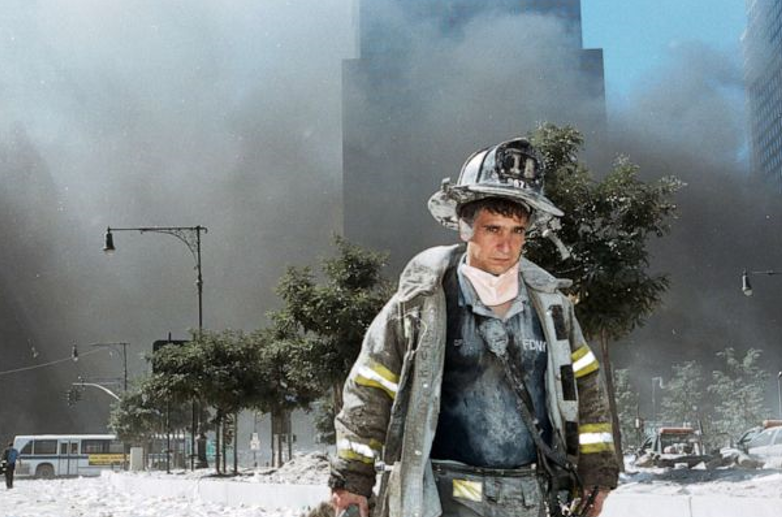
The New York City Fire Department dispatched 200 units to the World Trade Center, accounting for half of the department’s total. Numerous off-duty firemen and emergency medical personnel aided them in their attempts. New York City Police Department Emergency Service Units and additional officers were dispatched, as well as the department’s aircraft unit. The FDNY, NYPD, and PAPD did not coordinate their efforts after they were on the site, and they conducted duplicate searches for people.
As the situation worsened, the NYPD aviation unit communicated information to police commanders, who gave orders for cops to leave the towers. The majority of NYPD officers were able to safely escape before the buildings fell. Warnings were not relayed to FDNY commanders due to different command posts and incompatible radio connections between the agencies.
FDNY leaders issued evacuation advisories after the first tower collapsed. Many firemen were unaware of the evacuation orders due to technical challenges with failing radio repeater systems. Callers provided information to 9-1-1 dispatchers that were not passed on to commanders on the scene. A massive search and rescue operation was initiated within hours of the incident. By the end of May 2002, the World Trade Center site had been cleaned after months of round-the-clock work. Within a year after the assaults, the Pentagon’s damaged part was restored and inhabited.
The temporary PATH station at the World Trade Center opened in late 2003, and the new 7 World Trade Center was finished in 2006. The core World Trade Center site was not rebuilt until late 2006 after leaseholder Larry Silverstein and the Port Authority of New York and New Jersey reached an agreement on finance. One World Trade Center’s development began on April 27, 2006, and it was completed on May 20, 2013. At that time, the spire was constructed atop the skyscraper, raising its height to 1,776 feet (541 meters), making it the tallest building in the Western Hemisphere. On November 3, 2014, One WTC completed its construction and opened its doors.
Three new office skyscrapers were to be erected on the World Trade Center site, one block east of the original towers. In the meanwhile, 4 World Trade Center debuted in November 2013, making it the second tower on the site to open after 7 World Trade Center and the first structure on the Port Authority land. The fourth tower at the site, 3 WTC, debuted on June 11, 2018, marking the site’s fourth completed skyscraper. On the 16th anniversary of the 9/11 attacks, a writer for Curbed New York said that while “there is a World Trade Center again,” it was not complete, citing the fact that 2 and 5 WTC had no specific completion dates, among other things. Christopher O. Ward, who served as Executive Director of the Port Authority of New York and New Jersey from 2008 to 2011, is a 9/11 survivor who is credited with resuming work on the 9/11 site.
Top 13 Interesting Facts About 9/11 Attack
On September 11, 2001, over 3,000 people were murdered in terrorist attacks on the World Trade Center in New York City, the Pentagon building in Washington, D.C., and an aircraft accident in Shanksville, PA, 400 of them were police officers and firemen.
The World Trade Center was not the first target of a terrorist attack. Six persons were murdered in a blast in February 1993.
Up to 50,000 people worked in the WTC twin buildings on any given day, while another 40,000 people strolled through the complex.
The rescue and recovery clean-up of the 1.8 million tonnes of rubble from the World Trade Center site took 9 months after the September 11th attacks.
Passengers on United Flight 93 were informed about prior plane attacks and sought to reclaim control of the jet from the hijackers. As a result, instead of crashing the jet into their unknown target, the hijackers crashed it into a Pennsylvania field.
While video testimony of the WTC assault was broadcast almost immediately, film footage of the Pentagon attack was not made public until 2006.
Despite having their own emergency response procedures, New York City’s police and fire departments did not have a synchronized response plan in the event of a catastrophic disaster.
The attack on the World Trade Center on September 11, 2001, resulted in the worst foreign strike on American territory in history.
18 persons were retrieved alive from the World Trade Center site’s wreckage.
Four fuel-laden US commercial jets destined for west coast destinations were kidnapped by 19 guys. In New York City, Washington, DC, and the surrounding area of Shanksville, Pennsylvania, a total of 2,977 individuals were murdered. Osama bin Laden, the head of al Qaeda, masterminded the attack.
Post-traumatic stress disorder (PTSD) is quite frequent among 9/11 survivors and rescue workers. People in and near the World Trade Center experienced respiratory issues such as asthma and lung inflammation at very high rates during and after the attacks.
The remains of a man slain at the World Trade Center have been positively identified, according to the New York City medical examiner’s office, according to more sophisticated DNA testing.
The US Senate enacted a law in 2019 that ensures that a fund set up to pay victims of the September 11th attacks will never run out of money and that first responder would never have to go back to Congress to ask for additional money.
Some FAQs Or Also Ask Question
What companies were affected by 9/11?
When America was attacked by terrorists on September 11, 2001, the entire business community felt the blow. Stock markets immediately nosedived, and almost every sector of the economy was damaged economically. The U.S. economy was already suffering through a moderate recession following the dot-com bubble, and the terrorist attacks added further injury to the struggling business community. Miraculously, however, the markets and business, in general, bounced back in a relatively short time. By the end of the year, the U.S. Gross Domestic Product (GDP), the total value of all goods and services, had increased over the previous year about 1%, to more than $10 trillion1, demonstrating that the economy had not been critically hurt by the 9/11 attacks. In fact, according to the Bureau of Economic Analysis (BEA), GDP increased 2.7% in the fourth quarter of 2001.
Who destroyed the World Trade Center?
The collapse of the World Trade Center occurred during the terrorist attacks of September 11, 2001, after the Twin Towers were struck by two hijacked commercial airliners. One World Trade Center (WTC 1, or the North Tower) was hit at 8:46 a.m. Eastern time and collapsed at 10:28 a.m. Two World Trade Center (WTC 2, or the South Tower) was hit at 9:03 a.m. and collapsed at 9:59 a.m. The resulting debris severely damaged or destroyed more than a dozen other adjacent and nearby structures, ultimately leading to the collapse of the 7 World Trade Center at 5:21 p.m. A total of 2,763 people were killed in the crashes, fires, and subsequent collapses, including 2,192 civilians, 343 firefighters, and 71 law enforcement officers as well as all the passengers and crew on the airplanes, which included 147 civilians and the 10 hijackers.
What company lost the most employees on 9-11?
When America was attacked by terrorists on September 11, 2001, the entire business community felt the blow. Stock markets immediately nosedived, and almost every sector of the economy was damaged economically. The U.S. economy was already suffering through a moderate recession following the dot-com bubble, and the terrorist attacks added further injury to the struggling business community. Miraculously, however, the markets and business, in general, bounced back in a relatively short time. By the end of the year, the U.S. Gross Domestic Product (GDP), the total value of all goods and services, had increased over the previous year about 1%, to more than $10 trillion1, demonstrating that the economy had not been critically hurt by the 9/11 attacks. In fact, according to the Bureau of Economic Analysis (BEA), GDP increased 2.7% in the fourth quarter of 2001.
When did the World Trade Center attack?
America was attacked by terrorists on September 11, 2001.
How many hijacked planes were in 9/11?
The resulting debris severely damaged or destroyed more than a dozen other adjacent and nearby structures, ultimately leading to the collapse of the 7 World Trade Center at 5:21 p.m. A total of 2,763 people were killed in the crashes, fires, and subsequent collapses, including 2,192 civilians, 343 firefighters, and 71 law enforcement officers as well as all the passengers and crew on the airplanes, which included 147 civilians and the 10 hijackers.






